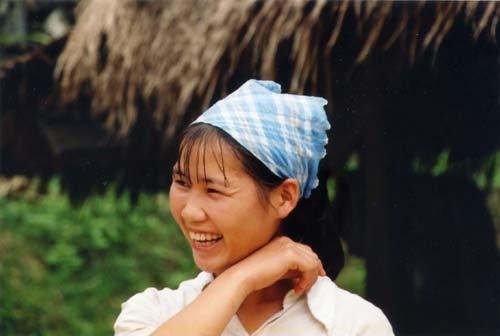Do You Know How Vietnamese People Cultivate Wet Rice?
Farmer in Northern Vietnam – Copywrite Brenda Sunno
Some 70 per cent of Vietnam’s population is engaged in agriculture, which uses over 20 per cent of the country’s area and produces 15 per cent of its GDP.
Vietnam has two huge deltas: the Mekong in the south and the Red River in the north. From time immemorial the Vietnamese have known how to build dykes and avoid flooding, creating more land for wet –rice cultivation. Thousands of kilometres of dykes have been built along the Red River to protect this vast fertile delta and its population.
Recently my friend Huong Do and I visited her uncle, who is a farmer in Hai Duong province in the very heart of the Red River delta. The host, Mr. Hien, was very enthusiastic about showing us rural life.
Generally they cultivate two types, sticky rice and ordinary rice. The first is used for special events and ceremonies such as Tet ( lunar New Year) and weddings.
Talking about wet-rice-cultivation, Mr. Hien recites a Vietnamese proverb:’Nhat nuoc, nhi phan, tam can, tu giong’. This translates as ‘First one needs water,then manure,then diligence, and finally high quality seed’. ‘In the north we have two rice crops and one subsidiary one, according to the weather’, he said.
The winter –spring crop begins in the 12th lunar month and finishes in the fourth. The summer –autumn one lasts from the sixth to the 10th lunar month. After these crops there is time for the land to heal and we plant maize,taro, potato and sweet potato’.
To Start a crop we have to prepare the land. We empty the water from each field. Then we plough deep and rake it carefully with the help of the buffalo. The buffalo is well cared for and respected in the same way that many foreigners care about dogs’.
There are three things that are critical to every Vietnamese farmer’s life: purchasing a buffalo, getting married and building a house.
‘In order to prepare the land we put down fertiliser, either natural or chemical.water is constantly needed too’.’Different varieties of rice are very important.
Normally we select the best species from previous crops, using techniques passed down through generations. “In order to germinate it we put the paddy in a jute sack and soack it in water for 24 hours. We then take it out of the water and arrange it in a dark, damp place to facilitate germination. After 12 hours we repeat the process.
In cool winter weather straw ash is mixed with the paddy in order to keep it warm. When the roots reach two to three centimetres you can sow rice in a small prepared area.
During this period the young rice plants need water, but not too much. After one month you pick the young shoots and transplant the rice seedling to another field. ‘Working the fields requires diligence, During the three- and-a- half months of rice development you have to constandy watch your field! You need to pull out any weeds growing with the rice. This work is normally reserved for women.
There has to be water in time for each period of development of the rice’.
The ethnic minorities in mountainous areas practice wte- rice-cultivation on terraces.
It is not until you actually take off your shoes, roll up your trousers and muck in that you really appreciate the skill and energy required to harvest rice.
As Mr Hien says,’when the rice is mature the whole family has to work. We cut the rice with sickles and bring it home by ox cart.
Fortunately, machines are now used for separating the paddy and straw. Last year we had a big harvest. This year we have had to work very hard due to floods’.
With a trace of sadness Hien adds that the farmer’s life is till difficult. ‘We depend on rice but if the price is too low there is no profit. The government should pay more attention to our life, to build processing zones for agricultural products and find markets for us’.
Famers in the south harvest three crops a year and the wet-rice-cultivation technique is also different.
Pham Ha






